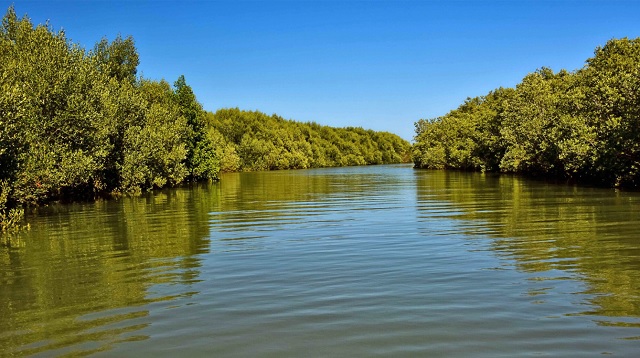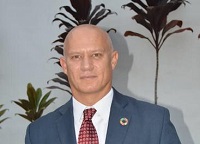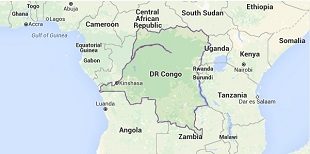
Countries can leverage on creative financial tools such as debt swaps, green bonds, blues bonds, and others, to unlock resources needed to protect marine ecosystems, drive economic growth, and support climate adaptation
COMMENT | JEAN – PAUL ADAM | Securing new financing for global good has become more challenging than ever. Negotiations at the recently-concluded COP16 on Nature and Biodiversity failed to reach an agreement on establishing a fund to support the implementation of the Framework for Nature agreed in 2022 under the Montreal-Kunming agreement.
The upcoming COP29 on climate change is also set to face an uphill task in setting a Collective Quantified Goal on climate finance that reflects the scale of resources required.
As with all multilateral action, commitments without resources lead to questions on the effectiveness of these global processes.
The gap between global commitments and actual resource allocation hits African countries the hardest, as these countries often have limited capacity to generate those resources in the first place.
African negotiators have underscored the need for accountability in honouring multilateral commitments and will continue to maintain this stance at the upcoming climate negotiations.
Meanwhile, many African countries are actively seeking to unlock new funding streams for climate and environmental resilience through financial innovations such as debt swaps, green bonds, and blue bonds.
The Blue Economy has emerged as a key area of focus for Africa, and one of the priorities outlined in AU’s Agenda 2063. However, African countries continued to struggle in controlling and benefitting from their own resources.
A good example is the continuing deployment of harmful fisheries subsidies. The value of subsidies by distant fishing nations for their fleets operating in African waters representing on average twice the value of support that African nations are able to provide for their own fishing fleets. This disparity undermines local economies and depletes Africa’s Ocean resources, further complicating efforts to build a sustainable and resilient blue economy.
The Great Blue Wall
African countries have sought to redefine the way in which they leverage their oceanic spaces to develop a ‘regenerative blue economy’. This implies re-investing in the ocean to create jobs that engage the community who are the stewards of oceans and coastal eco-systems.
This has been conceptualized through the Great Blue Wall initiative, an ambitious project that seeks to create a network of conserved and restored seascapes that benefit both the natural biodiversity and local communities’ livelihoods. The initiative aims to protect 30% of the countries Exclusive Economic Zones by 2030 and produce a net gain in critical ecosystems like mangroves, corals and seagrasses. It is hoped that the initiative can contribute up to 70 million livelihoods in the region and up to 10 million blue jobs by 2030.
The Great Blue Wall initiative brings together 10 countries: Comoros, Kenya, Madagascar, Mauritius, Mozambique, Seychelles, Somalia, South Africa, Tanzania, and France (through its overseas department of La Réunion). These countries are working together to enhance socio-ecological resilience, improve livelihoods, and strengthen climate change adaptation efforts.
Financing
Crucially, the initiative is seeking to raise financing towards a collective goal, while building on efforts being made by individual countries. This brings certain advantages, notably in creating economies of scale. This common approach can also provide significant leverage in addressing issues such as fisheries management and moving away from the current extractive nature of fisheries subsidies to a community-led approach to the management of the resource.
Additionally, many other African countries are looking to tap into innovative climate finance opportunities to generate resources for investment in their blue economy.
For example, Cabo Verde and São Tomé and Príncipe have entered into agreements with Portugal to convert portions of their national debt into climate investments. For Cabo Verde, the agreement involves a debt swap of $12.9 million (€12 million), while São Tomé and Príncipe’s agreement covers $3.7 million (€3.5 million). These funds are redirected into climate investment projects rather than being paid directly to Portugal.
In Cabo Verde, the focus is on water, sanitation, and energy projects, including the expansion of a photovoltaic plant and the development of desalination and water treatment facilities. The initiative aims to use solar energy to produce desalinated water, addressing both energy and water needs.
São Tomé and Príncipe will similarly channel their debt repayments into a national climate fund, supporting various green investments and climate change adaptation projects.
This innovative approach ensures that the debt repayments contribute to sustainable development and environmental protection in these countries. While the amounts are relatively small, they can be catalysts for mobilizing larger funds.
It is with this in mind that Sao Tome and Principe have also announced the creation of a Conservation Trust Fund aimed at channeling resources into the preservation of their unique natural heritage and leveraging new associated economic opportunities such as eco-tourism.
All of these efforts to mobilize innovative climate financing are rooted in the needs of populations who are on the front line of climate change. This is perhaps the most meaningful part of these efforts, because it underscores the greatest challenge of multilateralism: ensuring that support is delivered to the most vulnerable in the community.
Investing in the nexus between climate, nature, and resilience is one of the most urgent and effective actions we can take. The right investments can help unlock the true value of Africa’s natural assets, estimated by the African Development Bank (AfDB) to be worth as much as USD $6.2 trillion.
We need global processes to deliver on the promise of predictable flows of finance at scale. However, equally important is the need to unlock African-driven initiatives that are built within communities. These innovations are helping to start that journey, paving the way for a meaningful change, empowering communities while addressing the challenges of climate change.
****

Adam is the Director, Policy, Monitoring and Advocacy at the UN Office of the Special Adviser on Africa.
 The Independent Uganda: You get the Truth we Pay the Price
The Independent Uganda: You get the Truth we Pay the Price


